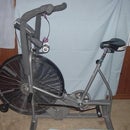Introduction: Pyrex Lid Organizer
The Pyrex glass containers that I use for many of my Instructable recipes store very nicely. They nest in orderly stacks, six tall in my cupboard. Their lids on the other hand are barely controllable. They don’t stack well and scatter like monkeys fleeing a circus.
Macaroni and Cheese from Scratch for One…or Six
Broccoli, Rice, and Cheese From Scratch for One…or Six
Faux Pot Pie – Chicken, Noodle, and Vegetables
I looked for a solution to corral these simian surrogates but couldn’t find one. So I built one, actually two now, to fit the lids and my cupboard. My cupboard can now manage four dozen lids.
Step 1: Layout and Cutting
I use paper products (paper, chipboard, corrugated, matboard, etc.) to mock up projects like fan ducting in a computer case or cup holder stands for my car (absolutely no flat surfaces anywhere). One of my favorite paper items is the carton from Skinny Pop popcorn. It has a very small corrugation, cuts well, and, most importantly, takes a sharp crease both with and across the corrugation. Also, reusing the carton results in an incredibly cheap organizer.
And since there is a sharp blade involved, the usual admonition about taking precautions so that you don’t cut yourself. I am not sure why I don’t feel obligated to issue a warning with recipes. Even though you might be wielding an 8-inch chef’s knife that is razor sharp. Anyway, be careful.
Equipment
Ruler
Pencil
Eraser
Box cutter
Straight edge (the ones with the guards are best, see the photo)
Scissors
1. Adjust the height dimension of the organizer to the distance between shelves minus 1/2 inch. Determine if you need the back cutout that compensates for a shelf support.
2. Mark the pattern on the corrugated. Where you can, use the existing creases and cuts. You can start from the left or the right as long as the panels are in sequence. In the photo, I went from the left to take advantage of an existing vertical crease. The bottom flaps take advantage of an existing horizontal crease.
3. Cut the pattern using a straight edge. You may notice that the top edges of the front slot weren’t removed yet when the photo was taken.
Note: The first rule of cutting is to use a cutting mat or something else that keeps the knife blade from cutting through. Mats are cheap, especially when compared to a counter top or a table top.
4. Fold the pattern on the marked lines. My counter tops have a sharp edge so I just line up the mark and gently bend the corrugated until it creases. After the initial crease, fold it a little further so the crease holds a 90-degree fold. A board edge also works well for creasing.
Note: If you don't like brown and popcorn, pick a contact paper and put it onto both sides of the corrugated. Do it while the corrugated is flat and then mark and cut it.
Step 2: Assembly
Equipment
Rubber cement
Small clamps
Carton tape
1. Glue the short flap to the inside of the side panel. I like rubber cement for paper. Apply it to both sides and let it dry just a bit (it goes from glossy to matte as it drys). Align the edges and press and hold the two sides together. With the two sided method, it will set quickly. If left alone while it cures, you probably don’t need clamps. Give it at least an hour to cure.
2. Cut a length of carton tape that will overlap the front and back. Fold in the end flaps and then the side flaps. Square up the organizer and apply and smooth the tape. The adhesive on carton tape is PSA (Pressure Sensitive Adhesive). That means you need to push down on the tape to get it to stick well.
3. Load with lids.

Participated in the
Home Hacks Challenge













